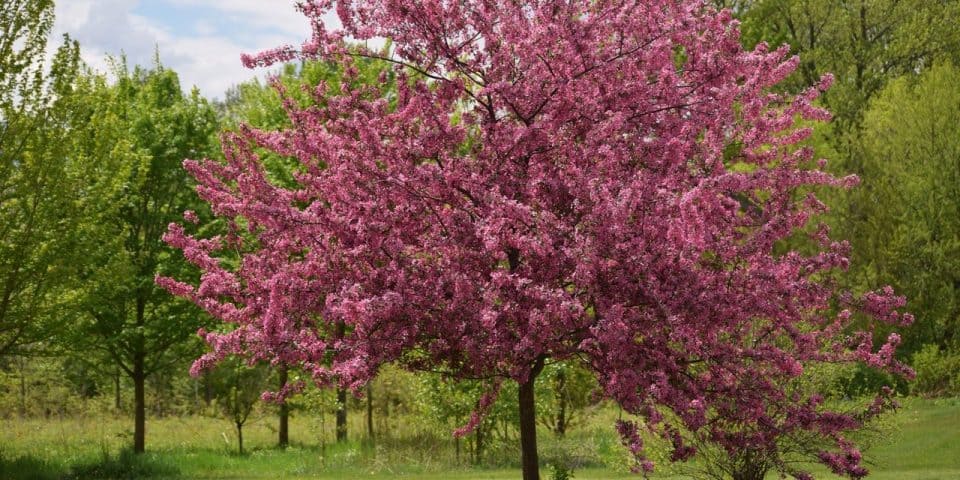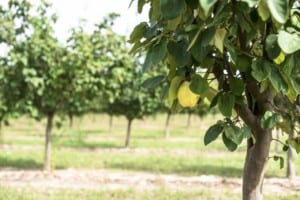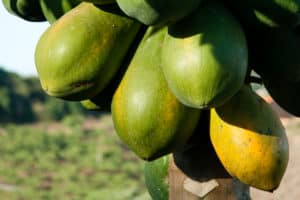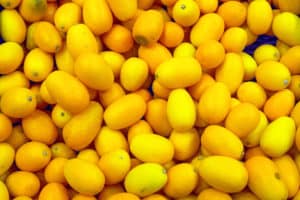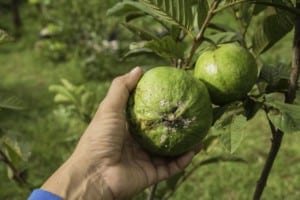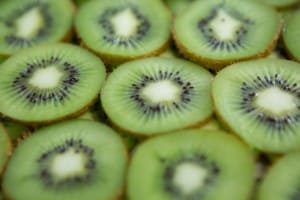Crabapples have been around for thousands of years but there are still people who aren’t sure what they are. Some people even conclude that they aren’t edible but what is the truth when it comes to these apples? Continue reading for the answers.
Contents
- 1. Dolgo Crabapple Trees
- 2. Centennial Crabapple Trees
- 3. Hopa Flowering Crabapple Trees
- 4. Whitney Flowering Crabapple Trees
- 5. Chestnut Crabapple Trees
- 6. Pink Spires Flowering Crabapple Trees
- 7. Firebird Crabapple Trees
- 8. Pink Princess Crabapple Trees
- 9. Red Jewel Crabapple Trees
- 10. Indian Magic Crabapple Trees
- 11. Marilee Crabapple Trees
- 12. Radiant Crabapple Trees
- 13. Siberian Crabapple Trees
- 14. Sargent Crabapple Trees
- 15. Florentina Crabapple Trees
- 16. SugarTyme Flowering Crabapple Trees
- 17. Robinson Flowering Crabapple Trees
- 18. Flame Flowering Crabapple Trees
- 19. Prairie Crabapple Trees
- 20. Hall’s Crabapple Trees
Contrary to what many people believe, crabapples aren’t an actual species of apples but instead a reference to the apple’s size. Crabapples are wild apples that are small in size; in essence, crabapples are just miniature apples!
Of course, crabapple tree types include both ornamental trees and trees with edible fruit. When the fruit is mature, it is usually red, orange, or even yellow in color. Therefore, whatever you’re looking for in an apple tree, you can usually find it if you look for crabapples.
Crabapples offer hundreds of hybrids and types, which means that their taste can vary widely across those types. Crabapples are indeed edible and can be sweet, sour, and even bitter. Many people also believe that crabapples are toxic but the fruit itself is perfectly safe to eat.
The only recommendation usually made is to avoid its seeds, stems, and leaves so that you don’t get the negative effects of the cyanide that is in them. If you do eat a few seeds, do not worry because you’d have to eat about 200 of them to do you any harm!
1. Dolgo Crabapple Trees
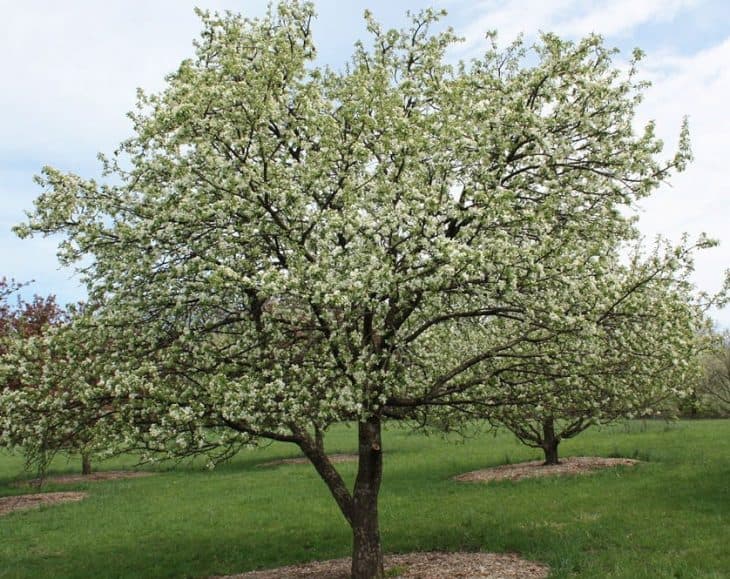
Dolgo crabapple trees get to roughly 35 feet in height and can be either edible or ornamental. You can use the Dolgo crabapple to make cider, jellies, and sauces. They are perfect when you want to dot your landscape with color and something interesting-looking.
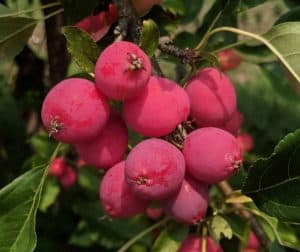
Dolgo crabapples are large and sweet and therefore can be eaten right off the tree. They are also very attractive trees with yellow leaves in the fall and white flowers in the spring. They are highly adaptable trees whose fruits contain a lot of pectin and are therefore naturally sweet.
2. Centennial Crabapple Trees
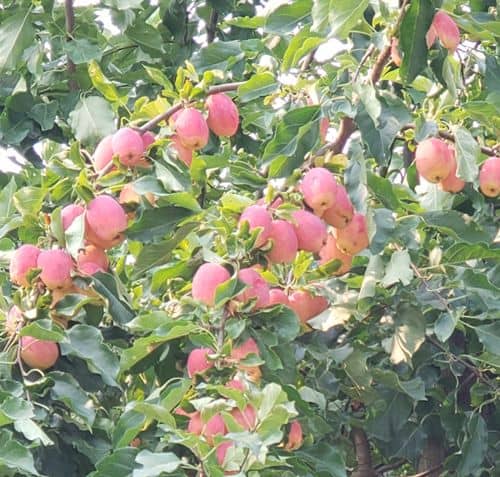
These are semi-dwarf in size and usually only get to around eight feet high. They can reach 15 feet in some cases. The fruit is very versatile and can be used for apple butter, spicing, and jelly. They are also perfect for eating straight off the tree.
Centennial crabapples ripen in mid-August and the fruit is a beautiful shade of bright orange-red. They are perfect when grown in zones 3-9 and are scab-resistant.
3. Hopa Flowering Crabapple Trees
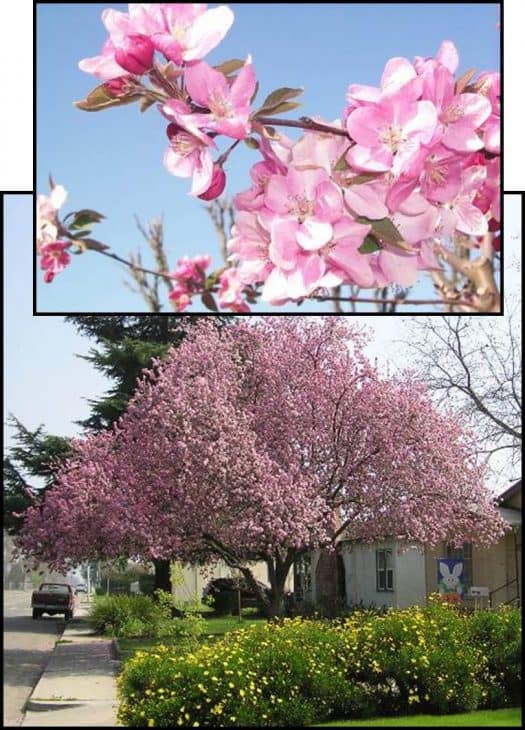
This is one of the many crabapple tree types that is considered ornamental with beautiful pink-rose flowers that have white stars in the center. The flowers have a great aroma and the tree is one of the biggest crabapple trees at 25 feet high.
The Hopa Flowering crabapple tree is also one of the toughest and sturdiest types of crabapple trees, although they can be susceptible to various diseases.
4. Whitney Flowering Crabapple Trees
If you’re looking for the perfect crabapple for canning, pickling, or making preserves, this is it. The Whitney Flowering crabapple tree usually gets to around 16 feet in height and it contains lovely pink and white flowers that attract birds.
Whitney crabapples are sweeter and larger than many other types of crabapples. It is also a self-pollinating type of tree.
5. Chestnut Crabapple Trees
If you’re interested in cooking crabapples for sauces and jellies, the Chestnut crabapple is a great choice. The fruit is sweet and nut-flavored and the tree is helpful to other trees because it is a pollinator. It is also perfect for growing in cold climates because it is very sturdy and strong.
Chestnut crabapples get up to two inches in diameter and are usually pale-yellow and streaked with red. The tree was developed in the mid-1940s and does well in most soil types. It ripens in early September.
6. Pink Spires Flowering Crabapple Trees
A bit narrower than other crabapple tree types, the Pink Spires Flowering crabapple tree gets to roughly 15 feet in height and has lovely flowers that are certain to attract the birds around your home. The flowers change colors and can be red, yellow, or bronze-green.
The Pink Spires Flowering crabapple tree is best used as an ornamental tree because the fruit doesn’t do well for cooking, canning, or eating fresh. If you’re looking for a great border tree for your yard, this tree is a great option because it stands upright and is narrow in stature. It is also beautifully colored.
7. Firebird Crabapple Trees
Firebird crabapple trees are small and ornamental in nature. In the spring, red buds will appear with bright white flowers inside. The fruit is bright red in color and sticks around from the summer months through the winter.
These trees also have a large canopy and are therefore the perfect tree to take up horizontal space in your garden. They do best in areas that get a lot of sunshine.
8. Pink Princess Crabapple Trees
Pink Princess crabapple trees are a dwarf variety ornamental tree with classic pink blooms and leaves that have a purple tint in the spring. The flowers are very aromatic and therefore attract both butterflies and hummingbirds.
If you live in an area that gets a lot of sun and has loamy soil that stays well drained, the Pink Princess crabapple tree is for you.
9. Red Jewel Crabapple Trees
With bright red fruit that ironically doesn’t attract wildlife, the Red Jewel crabapple tree is covered with lovely white flowers in the spring and has an oval-shaped crown. Because of this, it doesn’t take up a lot of room and therefore makes a great tree for narrower spaces.
If you want to keep a strong trunk for your Red Jewel crabapple tree, you have to make sure that you prune it regularly while it is young.
10. Indian Magic Crabapple Trees
With a round, stout shape and fruit that stays on the tree into the winter months, the Indian Magic crabapple trees have lovely pink flowers that the butterflies and hummingbirds love. Because they do well in most types of soil, the Indian Magic tree can even tolerate short bouts of drought.
The fruits of this tree are usually a beautiful shade of orange-red and are quite eye-catching. The tree can get up to 20 feet high and 20 feet wide. The dark green leaves turn a golden orange in the fall. It does well in full sun and grows best in medium-moisture, well-drained soil.
11. Marilee Crabapple Trees
If you don’t want to spend your fall months sweeping up crabapples, the Marilee crabapple tree is the perfect one to choose. Naturally fruitless, the Marilee is large and produces lots of shade and lovely white flowers in the spring.
These trees do well in most types of soil and tend to grow fast, so you’ll have a full shade tree in your yard before you know it.
12. Radiant Crabapple Trees
Another one of the crabapple tree types that is perfect for producing lots of shade, the Radiant crabapple tree has leaves that start out with a purple tint but turn bronze-green later on during the season. They also have a sprawling shape that is perfect for producing shade.
Best of all, the Radiant crabapple tree has dark pink flowers and small red fruits that the birds will love during the winter months. They tolerate partial shade well and are therefore good when placed alongside other shade trees.
13. Siberian Crabapple Trees
Also known as a Chinese crabapple tree, this tree is native to most of northern Asia and has aromatic white flowers that produce a very pleasant scent. The fruit is usually either red or yellow in color and is quite small, usually less than half an inch in diameter.
The fruits of the Siberian crabapple tree are usually either dried or eaten fresh. Both the flowers and fruit are often used as a decoration. The tree is very tall and resistant to both pests and cold weather.
14. Sargent Crabapple Trees
Native to Japan but found in other places as well, the Sargent crabapple tree is a shrub that only grows to about six feet in height and is commonly grown as an ornamental tree only. It has beautiful white, large-petaled flowers with yellow centers that are real head-turners.
These trees are lovely and are certain to be noticed, making them great to use as decorations for your garden. In fact, Sargent crabapple trees make perfect hedges and privacy screens. They are often planted underneath utility lines to prevent people from getting into danger.
15. Florentina Crabapple Trees
Also known as the Hawthorne-leaf crabapple tree, this type is found mostly in Italy and the Balkan peninsula. It is an upright tree that is vase-shaped and can get up to 26 feet in height. Florentina crabapples are oval-shaped and usually get up to half an inch in size so they are quite small.
Perfect for growing zones 4-8, this is one of several crabapple tree types that ripens in the fall and it is not frost-tender. The Florentina fruit is usually eaten either raw or cooked. If it bletts — or softens — on the tree, its flesh can be slightly acidic.
16. SugarTyme Flowering Crabapple Trees
With crisp green leaves and very fragrant flowers, the SugarTyme Flowering crabapple tree is disease-resistant and contains pale pink flowers with showy white ones on the inside. Its red fruit lingers throughout the winter and the tree itself has a medium growth rate.
SugarTyme crabapple trees can get up to 18 feet high and 18 feet wide, and they do best when grown in zones 4-8. If you’re looking for a showy and eye-catching tree to include in your landscape, this is definitely one to consider.
17. Robinson Flowering Crabapple Trees
A deciduous tree that prefers temperate climates and full sun, the Robinson Flowering crabapple tree can grow up to 25 feet in height and up to 20 feet in width. It does best when grown in zones 4-8 and with full sun. Since it self-pollinates, it doesn’t have to be planted near other trees.
These trees can even stay healthy down to -15ᵒ Fahrenheit and the beautiful flowers and shapely form make it one of the most attractive crabapple trees in existence today. They are a low-maintenance tree that is easy to grow and they bloom in the spring, usually April.
18. Flame Flowering Crabapple Trees
These trees are hardy and very easy to grow. It flowers in the springtime with light pink blooms that open to the color white. A deciduous tree that does best in full sun, the Flame crabapple tree does best when grown in zone 3 and has small, bright-red fruit.
Flame crabapple trees also grow to roughly 25 feet in height, making them a very eye-catching type that your friends and family are sure to notice. The flowers are usually various shades of pink and white. The tree itself can tolerate deer, rabbits, and pollution.
19. Prairie Crabapple Trees
Also known as Iowa crabapple trees, they are found throughout the Midwestern United States and have leaves that are pointed in shape and contain white down on the underside. These trees have flowers that appear in late spring and are either pink or white in color.
The tree is similar in appearance to the American crabapple trees except for the differences mentioned above. They are called sweet crabapples in some parts of the world. The tree has a dense but irregular form and has fruit that is regularly consumed by birds, squirrels, and rabbits.
20. Hall’s Crabapple Trees
Hall’s crabapple trees have bright rose or pinkish-white flowers just as other crabapple tree types do. They have yellowish-white centers that add a special touch to the flowers and the fruit is small, usually one-third of an inch in diameter, and purple in color.
Hall’s crabapple trees usually grow to around 16 feet in height and do well down to Zone 6. They typically don’t do well in places where the temperatures get too cold and prefer temperatures above zero degrees Fahrenheit.

